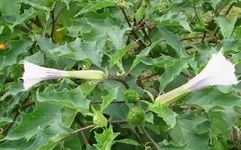
1Mandrake (Man Tuo Luo)
It is toxic and serves as a sedative, capable of relaxing muscles. It is a key ingredient in ancient anesthetic formulas and Yunnan Baiyao. Different parts of the plant (flowers, seeds, leaves, roots) are used in folk medicine to treat various diseases. Chewing ten seeds can help treat insomnia.
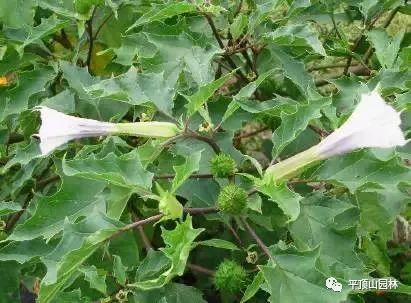
2Ghost Needle Grass (Gui Zhen Cao)
When young, it can be eaten as a vegetable and is said to be quite tasty. It is reputed to effectively lower transaminases and can help disperse liver heat.
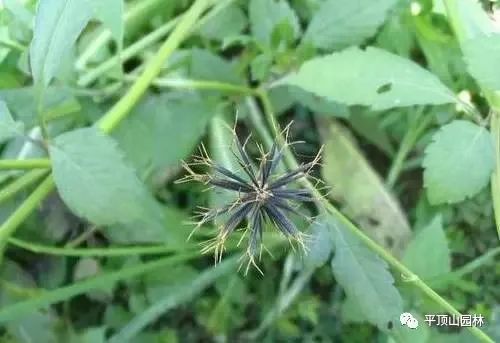
3Bitter Herb (Ku Cai)
In Yunnan, people refer to green vegetables as bitter herbs, but the one in the picture is the true bitter herb. It is listed as a superior herb in ancient texts, known to strengthen the stomach and benefit the gallbladder, and has anti-tumor properties, making it suitable for modern individuals.
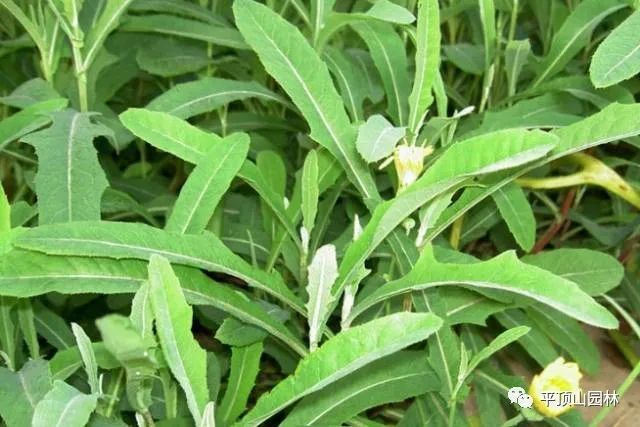
4Sunflower Greens (Kui Cai)
There are wild and cultivated varieties. Listed as a superior herb in the “Classic of Herbal Medicine,” it is a vegetable beneficial to health, though most regions are unaware of its edibility. The wild variety shown above can benefit the five organs, with the roots used to promote kidney function and the leaves used with brown sugar for effective external treatment of sores and swellings.
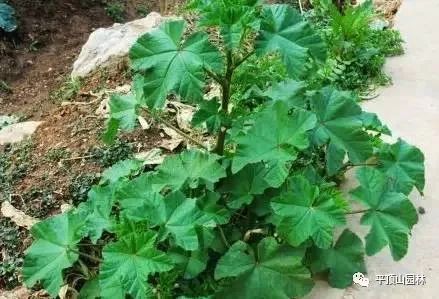
5Nettle (Xian Ma)
Some texts mention it as toxic, while others describe it as mildly toxic or even highly toxic. In the past, it was commonly used medicinally, but now it is often consumed as a vegetable. Its stinging hairs can cause a prickling sensation upon contact. It can be made into soup or fried with eggs for a delicious dish. It is used to treat children’s coughs and toothaches. One patient reported that its roots have remarkable effects on treating urticaria.
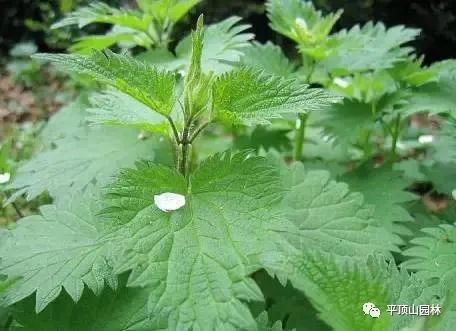
6Black Nightshade (Long Kui)
It clears heat and treats tumors, and is also a commonly used wild vegetable. It has liver-protecting, stomach-strengthening, and vision-improving properties.
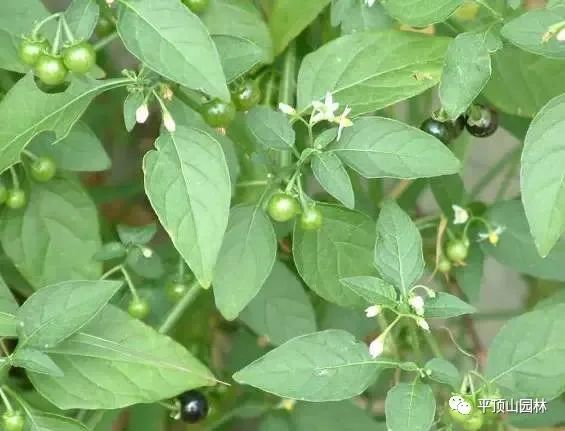
7Yellow Robe (Huang Pao)
The fruit is delicious, appetizing, and softens the liver, making it good for children.
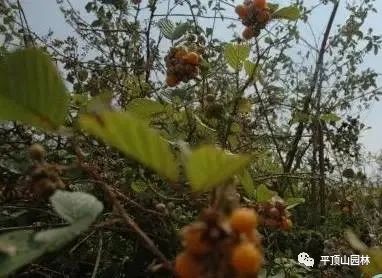
8Fo-Ti (He Shou Wu)
Used to tonify and nourish qi and blood, it has a mild flavor and can be consumed regularly. Raw, it detoxifies and promotes bowel movements without harming yin. The vine has calming and blood-nourishing effects.
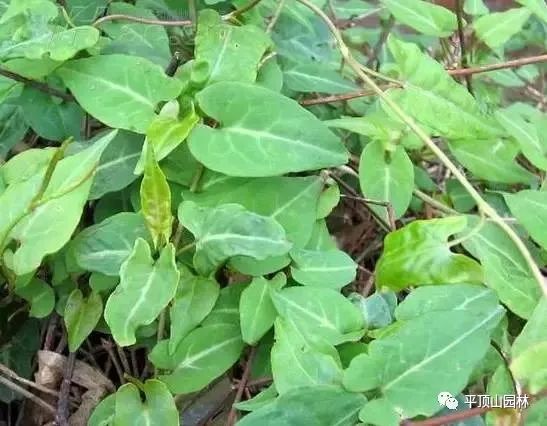
9Black Robe (Wu Pao)
The fruit has similar effects as Yellow Robe, while the leaves and tender tips, when cooked with brown sugar, are effective for treating liver-related diarrhea without side effects.
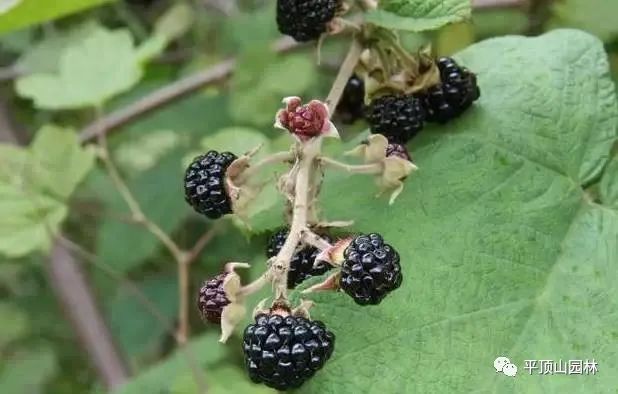
10Wild Mint (Ye Bo He)
It has a similar taste and effect as cultivated mint, dispersing wind-heat, eliminating foul qi, and detoxifying from fish and shrimp.
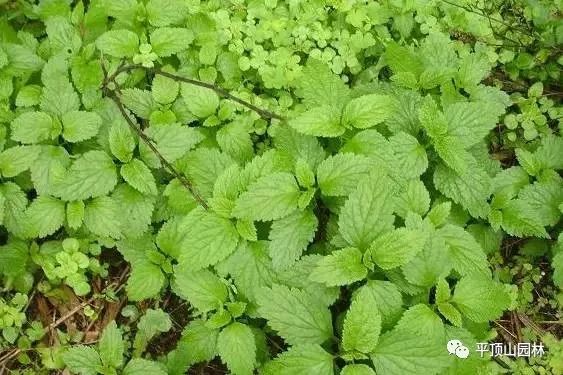
11Palm (Zhong Yu)
Used for its fibers, flowers, and roots, it has astringent properties and can stop bleeding, particularly effective for gynecological discharge.
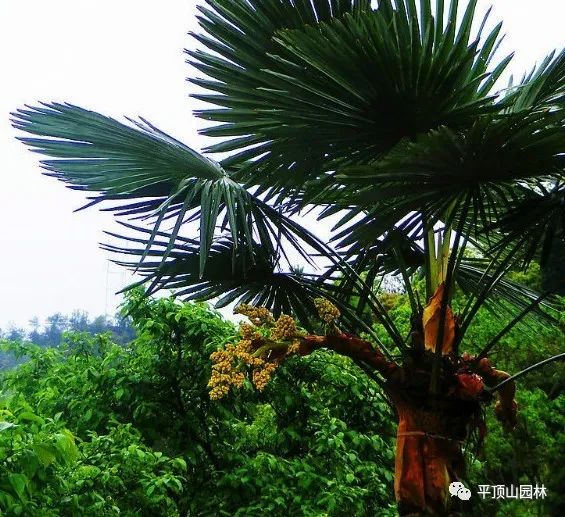
12Gray Herb (Hui Hui Cai)
Generally not used medicinally, it was historically used to make winter ash and is now rarely utilized. It can clear lung and visceral stagnation.
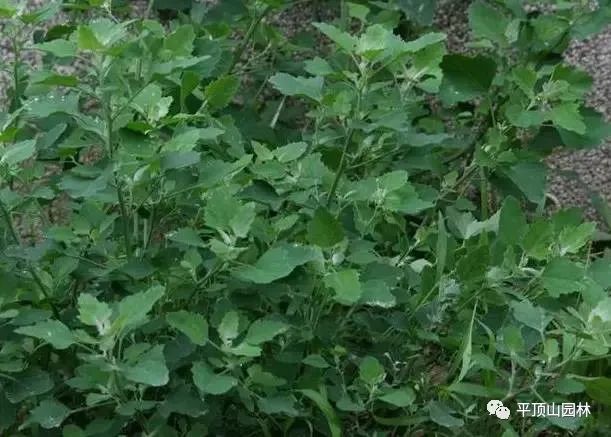
13Summer withered grass (Xia Ku Cao)
It grows according to the seasons, harmonizes blood, draws yang into yin, and treats insomnia. It has a salty taste and can soften hardness and disperse accumulations. Non-toxic, the tender shoots can be used as a vegetable, but in Yunnan, there are many vegetables, and few people eat it.
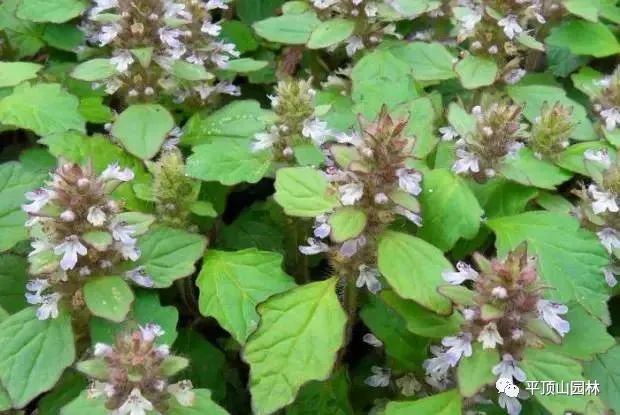
14Plantago (Che Qian Cao)
Used in pharmacies, the seeds and grass have similar effects, clearing bladder heat, benefiting kidney qi, and preventing stone accumulation. Additionally, it can help expel lung heat through urination and treat coughs. There are large-leaf and small-leaf varieties, with the small-leaf being superior.
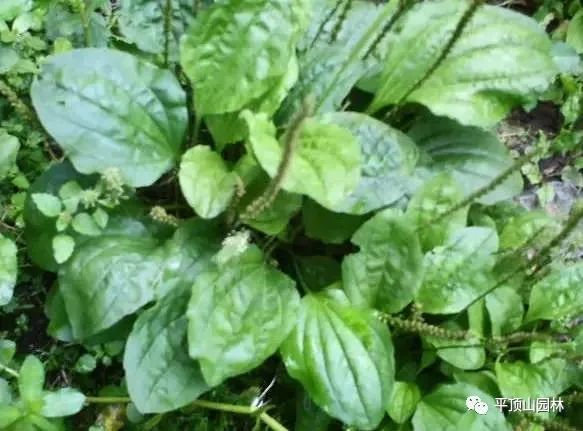
15Iron Wormwood (Tie Hao)
There are many types of wormwood, some for medicinal use, some for food, and some for both. Pharmacies often use Qinghao and Huanghao. Iron wormwood can clear empty heat and is similar to Qinghao, with a less bitter taste. During difficult times, it was also consumed by the common people to stave off hunger and has health benefits, but unfortunately, it has not been researched or developed.

16Honeysuckle (Jin Yin Hua)
All parts of the honeysuckle can be used medicinally and is one of the precious Chinese medicinal materials recognized by the State Council. Honeysuckle has functions of clearing heat and detoxifying, antibacterial and anti-inflammatory, and protecting the liver and benefiting the gallbladder. Clinically, it is used to treat respiratory infections, headaches, and sore throats. 1. Antibacterial, honeysuckle inhibits Staphylococcus, Shigella, and Streptococcus pneumoniae. 2. Honeysuckle can neutralize cholesterol, thereby reducing intestinal absorption of cholesterol. 3. It is effective for influenza, pneumonia, coronary heart disease, and hyperlipidemia, enhancing immunity and delaying aging.
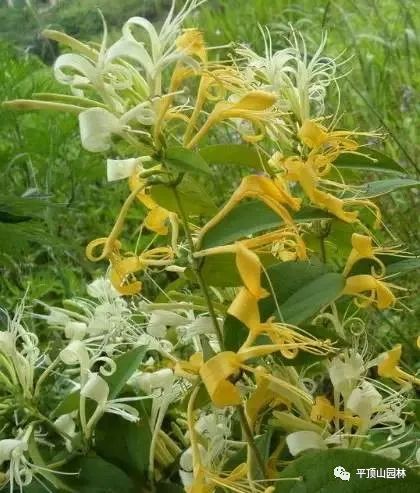
17Dandelion (Pu Gong Ying)
Taste and function: Sweet, slightly bitter, cold. Clears heat and detoxifies, reduces swelling and disperses lumps. Main indications: Upper respiratory infections, conjunctivitis, epidemic mumps, mastitis, gastritis, dysentery, hepatitis, cholecystitis, acute appendicitis, urinary tract infections, pelvic inflammatory disease, and boils. Application references: 1. For epidemic mumps and mastitis: fresh dandelion crushed and applied to the affected area. 2. For chronic osteomyelitis: 15 grams of dandelion, 1 tablespoon of fermented rice, boiled and mixed to be taken after meals. 3. For boils: 30 grams each of dandelion, wild chrysanthemum, honeysuckle, and ground grass, boiled and taken.
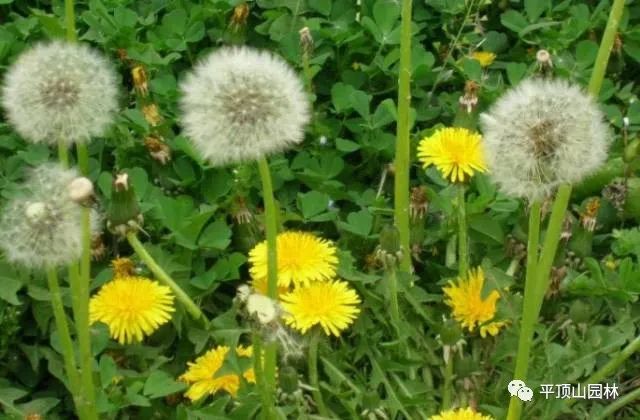
18Duck Tongue Grass (Ya Zhi Cao)
Main indications:
1. Urinary obstruction. Use one or two ounces of duck tongue grass and one or two ounces of plantago, crush to extract juice, add a little honey, and take on an empty stomach. 2. Dysentery (red and white). Boil duck tongue grass and take daily. 3. Throat obstruction. Use duck tongue grass juice to gargle. 4. Hemorrhoids with swelling and pain. Use duck tongue grass and Bichan flower together, crush and apply to the affected area. [Other names] Bamboo joint vegetable, duck quack grass, earring grass, blue flower vegetable, green butterfly, triangle vegetable, three pod vegetable, bamboo grass, blue flower water bamboo grass, light bamboo leaves. [Taste and properties] Sweet, bland, cold. Enters the lung, stomach, and small intestine meridians. [Dosage] 15-30g; fresh product 60-90g. External use as needed. (1) For external heat or heat disease with persistent fever, or throat swelling and pain, and for boils and sores. This product is sweet and cold, with heat-clearing and detoxifying effects. For external heat or heat disease with persistent fever, it can be used alone; it can also be combined with other heat-clearing or detoxifying herbs. For throat redness and swelling, it can be combined with dandelion, black plum, or earth cow knee, and big blue leaves. For treating boils and sores, it can be combined with ground grass, dandelion, and wild chrysanthemum. (2) For urinary difficulties, edema, or dampness entering the bladder with painful urination. This product has good diuretic effects, and for wind-water edema or urinary difficulties, it can be combined with duckweed, coriander, etc.; for damp-heat entering the bladder with painful urination, it can be combined with tail grass, flat-leafed grass, and dandelion. (3) Additionally, it can be used for snake bites, both internally and externally. (4) Duck tongue grass excels at clearing heat and promoting urination. Clinical experience shows that after taking this product, high fever gradually subsides, and urine output increases, but after stopping the medication, body temperature rises again. Therefore, if used alone, it seems that the detoxifying effect is not strong, and it is advisable to combine it with other heat-clearing and detoxifying herbs in clinical use. (5) Duck tongue grass and light bamboo leaves can both clear heat and promote urination, with similar effects, but duck tongue grass is stronger.
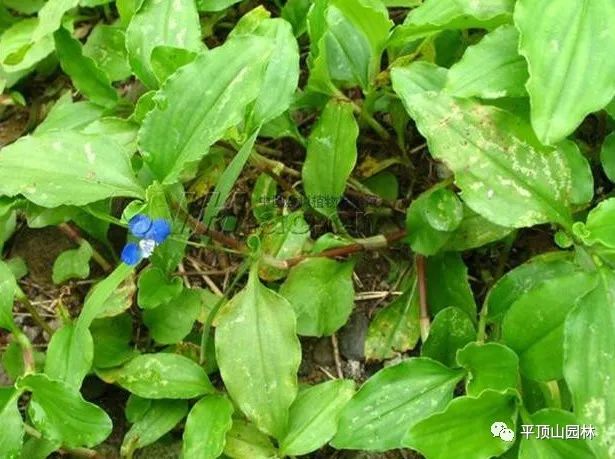
19Hanging Grass (Chui Pen Cao)
Grows in fields near water.
Sweet, bland, slightly sour, cool. Can clear heat and detoxify, reduce swelling, promote urination, and detoxify snake bites. Main indications and usage: For severe burns, boils, and snake bites: fresh grass 1-4 ounces, wash, crush, and take juice. Dried product 5-10 grams, boiled. For external use, fresh grass as needed, wash, crush, and apply to the affected area.

20Lantern Grass (Deng Long Cao)
This one needs no introduction; it is often picked in childhood. Sour and neutral, it clears heat and detoxifies, promotes urination, stops bleeding, reduces swelling, and disperses lumps. Main indications and usage: (1) Sore throat, lung abscess, mumps. (2) Urinary difficulties, blood in urine. For the above conditions, use 30-50 grams, boiled. (3) Gum swelling: fresh grass washed, crushed, soaked in vinegar, and gargled. (4) Pemphigus: fresh whole grass washed, crushed, and applied to the affected area.
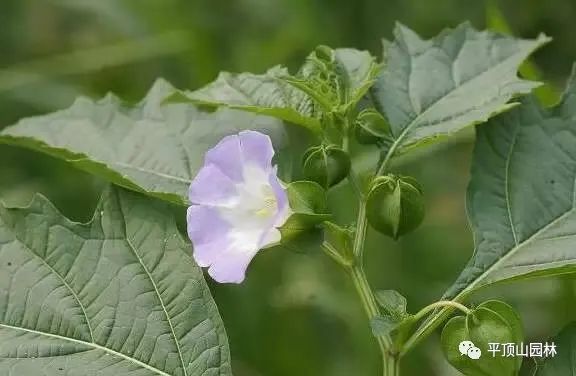
21Common Cocklebur (Cang Er Zi)
[Properties] Warm, spicy, and bitter. [Functions and indications] Dispels wind-dampness and opens nasal passages. Used for wind-cold headaches, nasal congestion, wind rash itching, and dampness causing stiffness and contraction. Note: The whole plant of common cocklebur is also medicinal, treating acute and chronic gastroenteritis and bacterial dysentery.
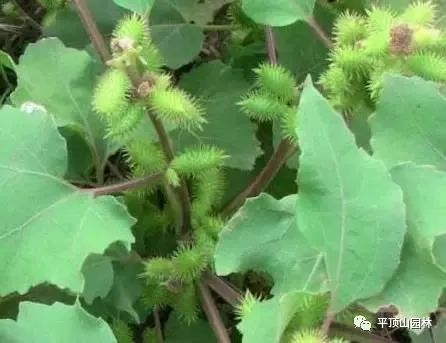
22Malva (Ma Lan)
Also a common wild vegetable. Other names: Malan head, front yard chrysanthemum, chicken intestine, red stem vegetable, etc. It belongs to the Malva genus in the mallow family. The whole plant is used medicinally. It is cool in nature and spicy in taste. It enters the hand Taiyin lung and foot Jueyin liver meridians. It cools the blood, clears heat, promotes dampness, and detoxifies. It treats vomiting blood, nosebleeds, blood dysentery, traumatic bleeding, malaria, jaundice, edema, turbid urination, sore throat, throat obstruction, hemorrhoids, boils, and snake bites. Dosage and usage: Internal use: decoction, 10-20 grams (fresh 30-60 grams); or juice. External use: crush and apply, grind into powder for sprinkling, or wash with decoction. Selected formulas: 1. For nosebleeds: fresh leaves, a handful, washed with the second rinse of rice water, crush to extract juice, mix with equal parts winter honey and take warm. 2. For pulmonary tuberculosis: 15 grams of root, stewed with pig heart and lung. 3. For various malaria chills and fevers: Malva juice, taken early in the morning, or mixed with sand sugar. 4. For intestinal colic pain: chew Malva root and leaves finely, swallow the juice. 5. For throat obstruction and tightness: crush Malva root or leaves, mix with a little rice vinegar, and drop into the nostrils or gargle. 6. For sore throat: 20-30 grams of the whole plant, decocted and taken frequently. 7. For breast abscess: crush Malva and apply to the affected area.
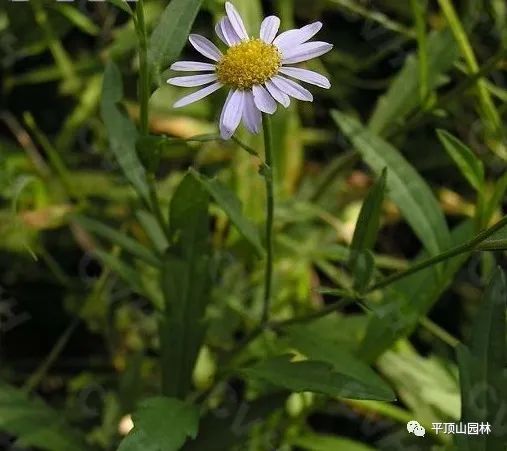
23Shepherd’s Purse (Jie Cai)
It is one of the most common wild vegetables, which can be stir-fried, cold tossed, or used as dumpling filling.
Also known as: Hu Sheng Cao, Xiang Tian Ji, Lan Gu Cai, etc. It belongs to the cruciferous family. The whole plant is used medicinally. It is neutral in nature and sweet in taste. It enters the hand Shaoyin, Taiyin, and foot Jueyin meridians. It harmonizes the spleen, promotes water metabolism, stops bleeding, and brightens the eyes. It treats dysentery, edema, gonorrhea, chyluria, vomiting blood, blood in stool, menorrhagia, and red, painful eyes. Dosage and usage: Internal use: decoction, 10-15 grams (fresh 30-60 grams); or in pills or powders. External use: grind into powder for application, crush and apply, or use juice. Selected formulas: 1. For dysentery: burn the leaves to ashes and mix with honey for oral administration; or use the whole plant, 60 grams, decocted. 2. For Yang syndrome edema: 30 grams of shepherd’s purse root and 30 grams of plantago, decocted. 3. For internal injury with vomiting blood: 30 grams of shepherd’s purse and 30 grams of honey dates, decocted. 4. For menorrhagia and excessive menstruation: 30 grams of shepherd’s purse and 30 grams of dragon sprout grass, decocted. 5. For children’s measles with excessive heat: 30-60 grams of fresh shepherd’s purse (or 30-40 grams of dried), and 60 grams of white grass root, decocted, can be taken as tea for a long time.
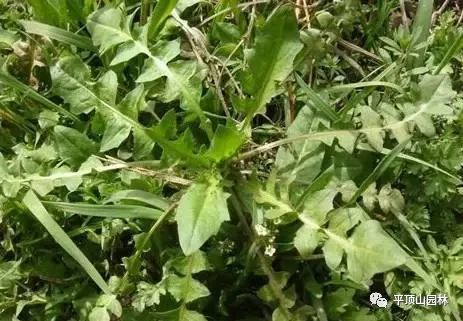
24Small Thistle (Xiao Ji)
One of the wild vegetables. Other names: Thorny vegetable, cat thistle, thorn radish, knife vegetable, wild red flower, etc.
It belongs to the thistle family. The whole plant or roots are used medicinally. It is cool in nature and sweet in taste. It enters the liver and spleen meridians. It cools the blood, dispels stasis, and stops bleeding. It treats vomiting blood, nosebleeds, blood in urine, blood dysentery, blood collapse, acute infectious hepatitis, traumatic bleeding, and carbuncles. Dosage and usage: Internal use: decoction, 4.5-9 grams (fresh 30-60 grams); juice or grind into powder. External use: crush and apply or wash with decoction. It is contraindicated for those with spleen and stomach deficiency and cold without stasis. Selected formulas: 1. For bleeding on the tongue, combined with severe bleeding: fresh leaves, a handful, crushed, and juice extracted, mixed with half a cup of wine for oral administration. If fresh juice is unavailable, use dried powder mixed with cold water. 2. For itching: decoct small thistle and wash three times a day.

25Water Celery (Shui Qincai)
One of the wild vegetables. It belongs to the Apiaceae family. The whole plant is used medicinally. It is cool in nature and spicy in taste. It calms the liver, releases the exterior, and promotes rashes. It treats early-stage measles, hypertension, and insomnia. If picked by oneself, care must be taken as there is another poisonous celery, which is robust and generally grows scattered, while water celery grows in patches near water or in wet areas.
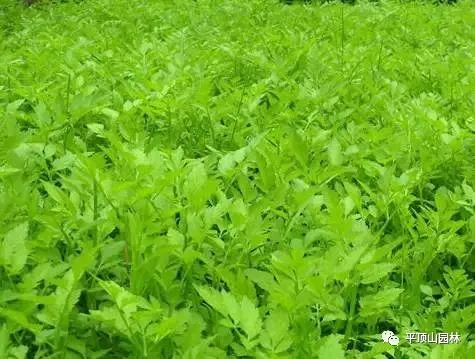
26Cilantro (Tian Hu Suo)
Other names: Broken copper coin, chicken vegetable, pot top coriander, etc., belonging to the Apiaceae family.
The whole plant is used medicinally. It is cold in nature and bitter and spicy in taste. It clears heat, promotes urination, reduces swelling, and detoxifies. It treats jaundice, red and white dysentery, gonorrhea, urinary difficulties, eye opacity, throat swelling, carbuncles, and traumatic injuries. Dosage and usage: Internal use: decoction 10-15 grams, or juice. External use: crush and apply, stuff the nose, or drop juice in the ear. Selected formulas: 1. For hepatitis with jaundice: fresh cilantro 15-30 grams (dried 10-15 grams), and 15 grams of Artemisia capillaris, decocted and taken three times a day. 2. For acute jaundice hepatitis: fresh cilantro 30-60 grams, one ounce of white sugar, and half an ounce of wine, decocted and taken daily. 3. For Yang jaundice and children’s wind-heat: crush fresh cilantro, add a little salt, and take with boiling water. 4. For summer heat in children: fresh cilantro as needed, juice taken three to five spoonfuls, five to six times a day. 5. For dysentery: cilantro, snake gourd, thorn pear root, and pomegranate peel, decocted and taken.
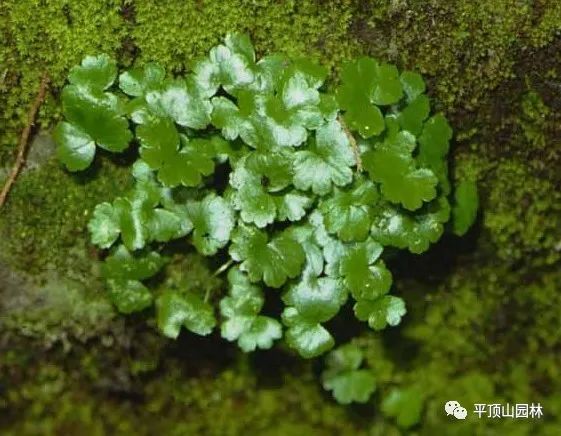
27Oxalis (Cu Jiang Cao)
Other names: Three-leaf sour grass, vinegar mother grass, and quail sour. It belongs to the Oxalidaceae family. The whole plant is used medicinally. It is cold in nature and sour in taste. It enters the Yangming and Taiyang meridians. It clears heat and promotes dampness, cools the blood, disperses stasis, reduces swelling, and detoxifies. It treats diarrhea, dysentery, jaundice, gonorrhea, red and white discharge, measles, vomiting blood, nosebleeds, throat swelling, carbuncles, and traumatic injuries. Dosage and usage: Internal use: decoction, 6-12 grams (fresh 30-60 grams), juice or grind into powder. External use: wash with decoction, crush and apply, or use juice for rinsing. Selected formulas: 1. For diarrhea: three grams of oxalis, add brown sugar and steam. 2. For dysentery: grind oxalis into powder, take five grams with boiling water. 3. For damp-heat jaundice: one to one and a half ounces of oxalis, decocted twice and taken in portions. 4. For blood dysuria and heat dysuria: fresh grass juice mixed with honey. 5. For urinary difficulties: a handful of oxalis, grind to extract juice, mix with wine. For those who do not drink alcohol, use three inches of licorice and a jujube-sized piece of ginger, crush together, and mix with five parts of well water, filter to extract juice and take. 6. For red and white discharge: dried oxalis ground into powder, taken with warm wine. 7. For measles: two to three grams of oxalis, decocted.
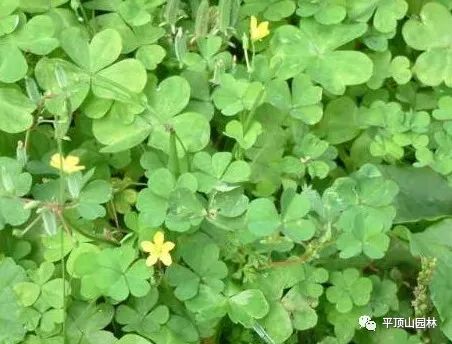
28Roll Ear (Juan Er)
Chinese medicinal name: Mother-in-law’s fingernail vegetable, other names: melon seed grass, high-foot mouse ear grass. It belongs to the Caryophyllaceae family. The whole plant is used medicinally. It is sweet in taste. It clears urinary heat symptoms. Dosage and usage: Internal use: decoction, 15-30 grams. External use: crush and apply. Selected formulas: 1. For initial breast abscess in women: fresh grass crushed and mixed with wine dregs to make a cake, heated and applied to the wrist pulse point, left breast on the right wrist, right breast on the left wrist. 2. For children’s wind-cold cough, fever, and nasal congestion: roll ear and coriander, 15-20 grams, and two to three grams of Hu Tui Zi leaves, decocted and sweetened with brown sugar, taken twice a day before meals. 3. For carbuncles: fresh roll ear grass mixed with tung oil, crushed and applied to the affected area.
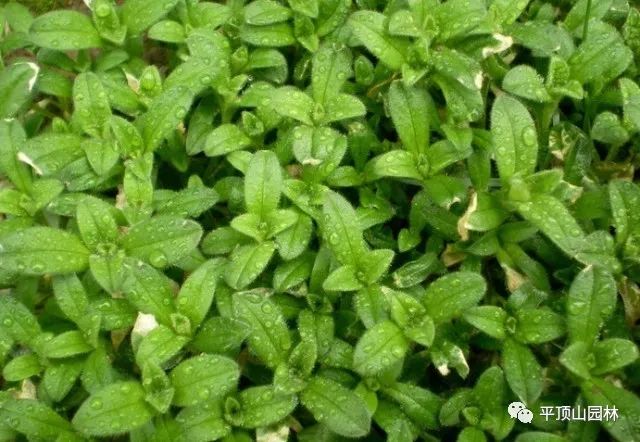
29Varnish Grass (Qi Gu Cao)
Other names: Pearl grass, earth pine. It belongs to the Caryophyllaceae family. The whole plant is used medicinally. It is cool in nature and bitter and spicy in taste. It treats varnish sores, bald sores, boils, scrofula, dental caries, children’s milk accumulation, and traumatic internal injuries. Dosage and usage: Internal use: decoction 10-15 grams, or grind into powder. External use: crush and apply. Selected formulas: 1. For varnish sores: fresh grass crushed, mixed with loofah leaf juice and vegetable oil for application. 2. For dental caries: crush and pack into the gaps between teeth. 3. For traumatic internal injuries: 10-15 grams of varnish grass, decocted. 4. For snake bites: crush varnish grass and mix with realgar for application. 5. For scrofula tuberculosis: 10-30 grams of varnish grass, decocted, and fresh grass crushed for external application.
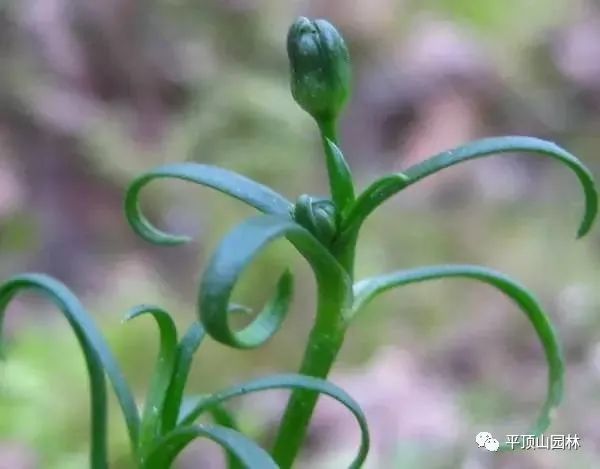
30Clear Spring Grass (Tong Quan Cao)
Chinese medicinal name: Green orchid flower, other names: tiger grass, stone damp grass, pus bubble medicine. It belongs to the Scrophulariaceae family. It is cool in nature, slightly sweet, and non-toxic. The whole plant is used medicinally. It reduces inflammation and detoxifies. It treats boils, abscesses, and burns. Selected formulas: 1. For boils and abscesses: dried clear spring grass, ground into fine powder, mixed with cold water for application, changed once a day. 2. For carbuncles: dried clear spring grass and hibiscus leaves crushed together, taken with rice washing water. 3. For burns from boiling water or fire: fresh grass crushed to extract juice, applied with clean cotton, frequently applied for effect.
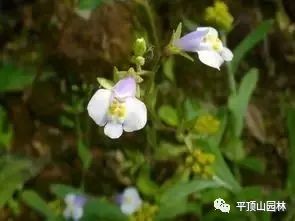
31Persian Speedwell (Bo Si Po Po Na)
Chinese medicinal name: Kidney grass, other names: lantern grass, Persian water bitter lettuce. It belongs to the Scrophulariaceae family. It is neutral in nature, spicy, bitter, and salty. The whole plant is used medicinally. It detoxifies heat, treats kidney deficiency, and alleviates rheumatism. Selected formulas: 1. For kidney deficiency: one ounce of lantern grass, stewed with meat. 2. For scabies: wash with lantern grass decoction. 3. For rheumatic pain: one ounce of lantern grass, boiled in wine and taken warm. 4. For chronic malaria: one ounce of lantern grass, one gram of stinkweed, decocted. 5. For children’s scrotal swelling: three ounces of lantern grass, decocted and used for steaming the affected area.
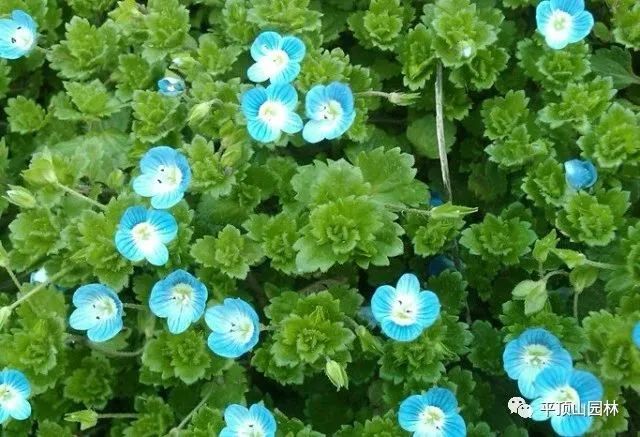
32Water Chestnut (Ze Qi)
Properties: Slightly cold, bitter; toxic. Functions and indications: Promotes urination and reduces swelling, transforms phlegm and disperses lumps, kills parasites and relieves itching. Used for ascites, edema, pulmonary tuberculosis, cervical lymph node tuberculosis, excessive phlegm and cough, and skin diseases. Dosage: 5-10 grams, decocted. External use as needed, caution for those with spleen and stomach deficiency and cold.
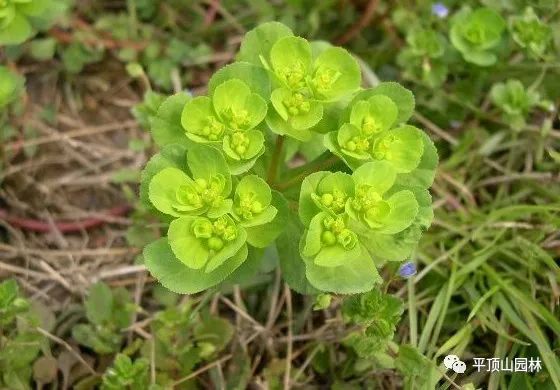
33Dog Tail Grass (Gou Wei Ba Cao)
Other names: Green dog tail grass, grain weed, weed, dog tail grass, bright grass, and Arhat grass. Main indications: Clears heat, removes dampness, and reduces swelling. Treats boils, sores, red eyes. Dosage and usage: Internal use: decoction, 6-12 grams (fresh 30-60 grams). External use: wash with decoction or crush and apply (sweet taste). [Properties and indications] Mild, neutral, functions to dispel wind and brighten the eyes, clear heat and promote urination. Used for wind-heat colds, conjunctivitis, red and painful eyes, jaundice hepatitis, and urinary difficulties; externally used for cervical lymphadenitis.
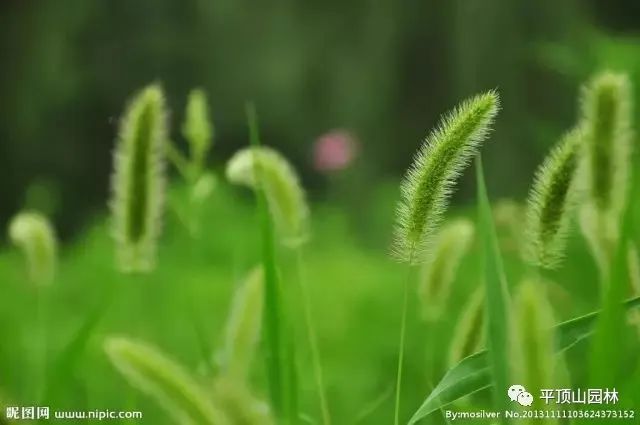
34One String Red (Yi Chuan Hong)
The medicinal part is the whole plant, which can be harvested during its growth period, used fresh or dried for later use. Properties and effects: Sweet, neutral. Clears heat, cools blood, and reduces swelling. Main indications and selected formulas for treating initial carbuncles: fresh one string red as needed, crushed and applied externally.
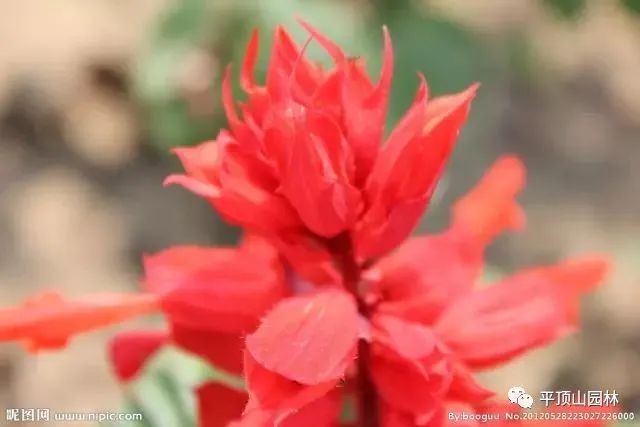
35Duck Tongue Grass (Ya Zhe Cao)
Duck tongue grass has dietary effects: it is bitter and cool; it has heat-clearing and detoxifying effects; it treats dysentery, enteritis, acute tonsillitis, erysipelas, and carbuncles. Preparation guidance: 1. For vomiting blood: one to two ounces of duck tongue grass, stewed with lean pork. 2. For red and white dysentery: appropriate amount of duck tongue grass, dried. Brew as tea daily for three to four days. 3. For carbuncles: crush duck tongue grass and mix with tung oil for application. 4. For tooth extraction: two grams of water jade hairpin, two grams of jade hairpin root, one gram of letter stone, and one fish (about one pound). Grind the first three herbs into fine powder, remove fish intestines, pack the herbs, and hang in a cool, ventilated place for about 50 days, when frost-like substances will grow on the fish scales, which is the medicinal powder used. When using, slightly peel the gums and apply this medicine (about the amount of one scale), and the tooth can be extracted shortly after. This medicine should not be swallowed to avoid poisoning. 5. For snake and insect bites: fresh duck tongue grass, crushed and applied. Contraindications: Avoid using for diarrhea due to deficiency and cold.

36Phoenix Eye Orchid (Feng Yan Lan)
Other names: Water hyacinth, water floating lotus.
All parts of the plant are used medicinally. Collected in spring and summer, washed, used fresh or dried. Properties: Bland, cool. Functions and indications: Clears heat and relieves summer heat, promotes urination and reduces swelling. Used for heat stroke, thirst, kidney inflammation, and urinary difficulties. Dosage: 15-30 grams.
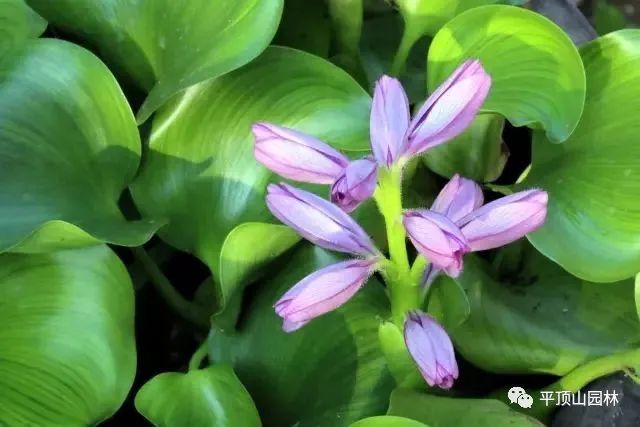
37Orchid Ginseng (Lan Hua Shen)
Tonifies deficiency, releases the exterior. Treats deficiency injuries, coughing blood, nosebleeds, spontaneous sweating, night sweats, women’s leukorrhea, wind-cold cough, stomach pain, diarrhea, and knife wounds.
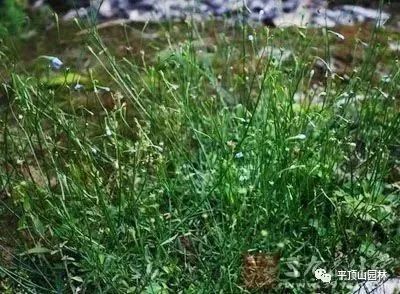
38Bupleurum (Chai Hu)
[Properties and meridians] Slightly cold, bitter, spicy, enters the liver, lung, and spleen meridians. [Functions] Releases the exterior and drains heat, soothes the liver and relieves depression, and raises yang qi. [Indications] Fever from colds, alternating chills and fever, malaria, liver depression and qi stagnation, chest and rib distension, prolapse of the rectum, uterine prolapse, and irregular menstruation. [Dosage] Bupleurum is taken in decoction, 9-30 grams. For releasing the exterior and reducing fever, a slightly higher dosage is recommended, preferably using the raw herb. For soothing the liver and relieving depression, it is best to use vinegar-fried bupleurum, while for raising yang qi, it can be used raw or vinegar-fried, with a slightly lower dosage recommended.

39Mulberry White Skin (Sang Bai Pi)
[Properties and meridians] Sweet and cold, enters the lung meridian. [Functions] Drains lung heat and relieves cough, promotes urination and reduces swelling. Used for lung heat cough, facial swelling, and urinary difficulties.
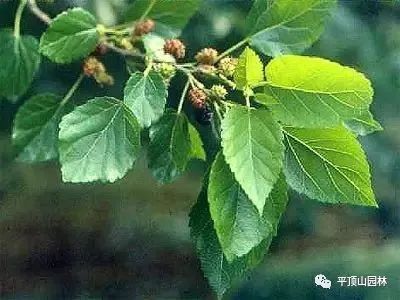
40Yuzhu (Yu Zhu)
Nourishes yin, moistens dryness, relieves restlessness, and quenches thirst. Treats heat illness with yin injury, cough with thirst, deficiency fever, easy hunger, and frequent urination.
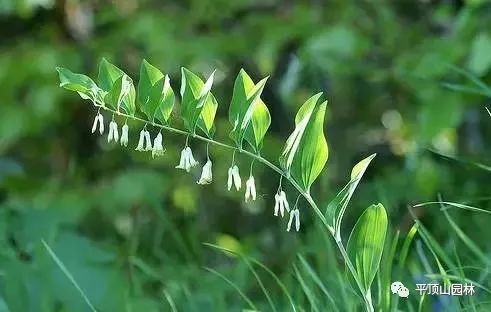
41Ophiopogon (Mai Dong)
[Properties and meridians] Sweet, slightly bitter, slightly cold. Enters the heart, lung, and stomach meridians. [Functions and indications] Nourishes yin and generates fluids, moistens the lungs and clears the heart. Used for dry cough, yin deficiency, sore throat, thirst, internal heat, and insomnia, as well as constipation.
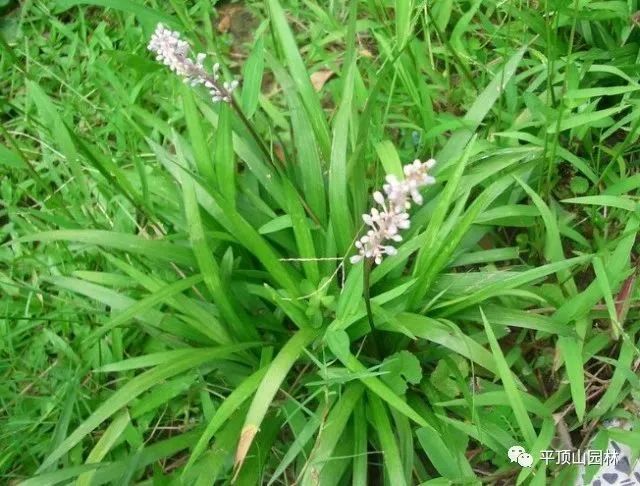
42Red Smartweed (Hong Liao)
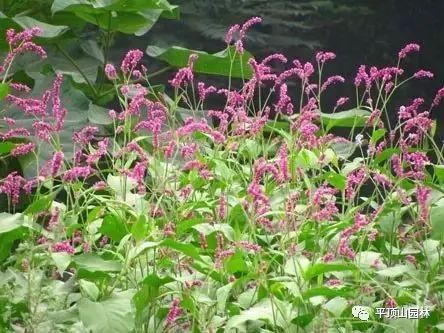
43Day Lily (Huang Hua Cai)
Day lily is a perennial herb’s flower bud, with a fresh taste and tender texture, rich in nutrients, containing abundant pollen, sugars, proteins, vitamin C, calcium, fats, carotene, amino acids, and other essential nutrients. Its carotene content is even several times higher than that of tomatoes. Day lily is sweet and cool in nature, with effects of stopping bleeding, reducing inflammation, clearing heat, promoting dampness, aiding digestion, brightening the eyes, and calming the spirit. It is effective for vomiting blood, blood in stool, urinary difficulties, insomnia, and insufficient milk production, and can be used as a tonic after illness or childbirth. [Properties]: Sweet, neutral. [Functions]: Nourishes blood, soothes the liver, promotes urination, and reduces swelling. Treats dizziness, tinnitus, palpitations, back pain, vomiting blood, nosebleeds, blood in the large intestine, edema, gonorrhea, and sore throat. Treats breast abscesses and boils: crush day lily roots for application. For children’s malnutrition: 15 grams of day lily leaves, decocted. Modern scholars have further discovered the medicinal value of day lily, with Japanese scholars calling it “brain-healthy vegetable”; the Chinese Journal of Nutrition has evaluated day lily as having a significant effect in lowering serum cholesterol in animals. It is known that elevated cholesterol is a major factor leading to diseases in middle-aged and elderly individuals and body decline, and there are not many delicious and nutritious vegetables that can combat aging, while day lily possesses these characteristics.
Regular consumption of day lily can also moisturize the skin, enhance its elasticity and resilience, making it tender, plump, smooth, and soft, reducing wrinkles and fading spots, adding beauty. Day lily also has antibacterial and immune functions, with mild detoxifying and anti-inflammatory effects, and plays a certain role in preventing infections.
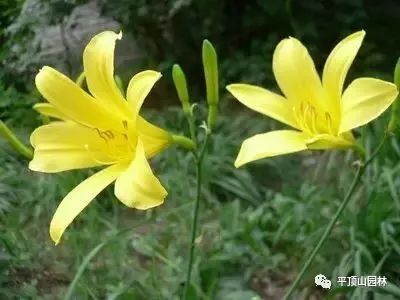
44Gardenia (Zhi Zi)
[Meridians]: Heart meridian; liver meridian; lung meridian; stomach meridian; triple warmer meridian. [Classification]: Rubiaceae. [Function classification]: Heat-clearing and fire-draining herb. [Functions]: Drains fire and relieves irritability; clears heat and promotes dampness; cools blood and detoxifies; dried gardenia: cools blood and stops bleeding. [Indications]: Heat disease with irritability; liver fire causing red eyes; headaches; damp-heat jaundice; dysuria; blood dysentery; mouth and tongue sores; carbuncles and swelling; sprains and swelling. [Taste]: Bitter, cold, non-toxic. [Dosage]: Internal use: decoction, 5-10 grams; or in pills or powders. External use: appropriate amount, ground into powder or mixed for application.
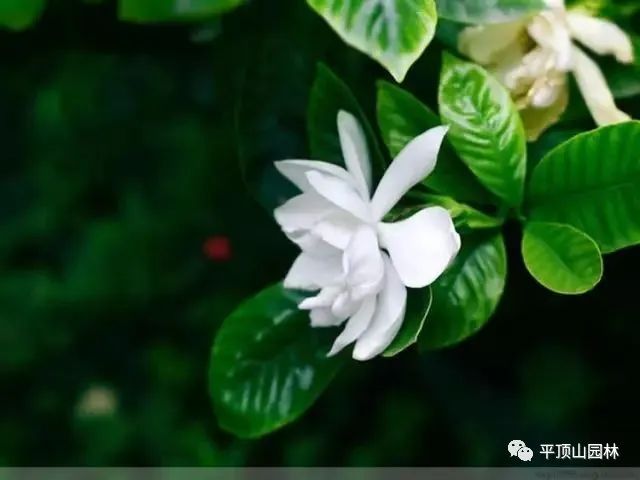
45Patchouli (Huo Xiang)
[Taste]: Spicy; slightly warm. [Meridians]: Enters the lung, spleen, and stomach meridians. [Functions and indications]: Dispels summer heat and releases the exterior; transforms dampness and harmonizes the stomach. Treats summer colds; cold and hot headaches; chest and abdominal fullness; vomiting and diarrhea; pregnancy-related vomiting; nasal congestion; hand and foot ringworm.
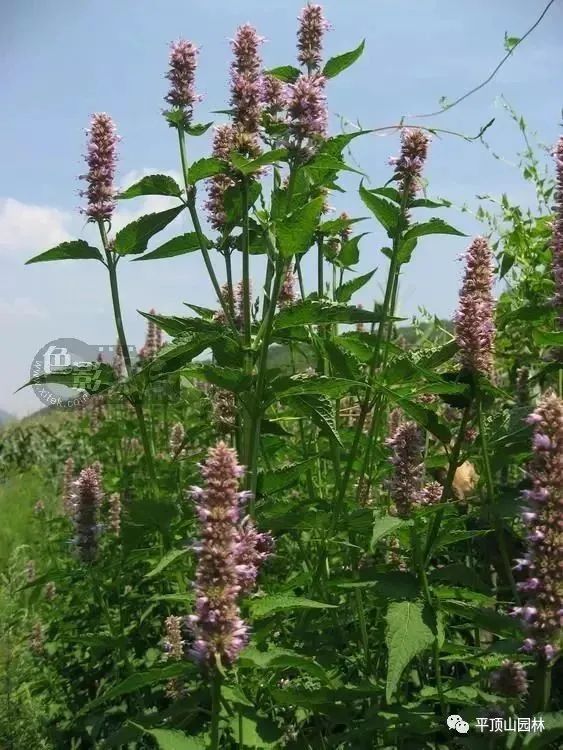
46Stream Yellow Grass (Xi Huang Cao)
[Taste]: Bitter, cold. Clears heat and promotes dampness, reduces jaundice and dampness, cools blood and disperses stasis. It is a very good herb for treating hepatitis. [Taste and properties]: Sweet and bitter, cool. [Dosage and usage]: Internal use: decoction, 25-50 grams (fresh 100-150 grams). [Functions and indications]: Clears heat and promotes dampness, cools blood and disperses stasis. Treats acute hepatitis, acute cholecystitis, dysentery, enteritis, urinary retention, and traumatic swelling. Jaundice hepatitis: symptoms include yellowing of the skin and sclera, chills and fever, fatigue, poor appetite, dull pain in the liver area, liver and spleen enlargement, yellow urine, red tongue with thin yellow coating, and wiry slippery pulse. Acute cholecystitis: symptoms include chills and fever, pain in the upper right abdomen radiating to the right shoulder and back, dry mouth and bitterness, nausea and vomiting, or accompanied by constipation or diarrhea, jaundice, etc.
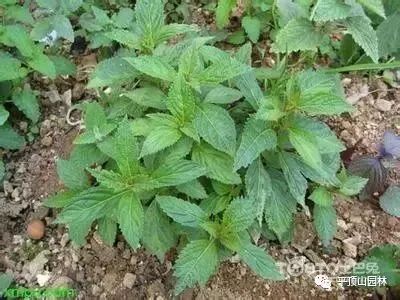
Plant Frontier (ID: pl-frontier)
All learners are here

